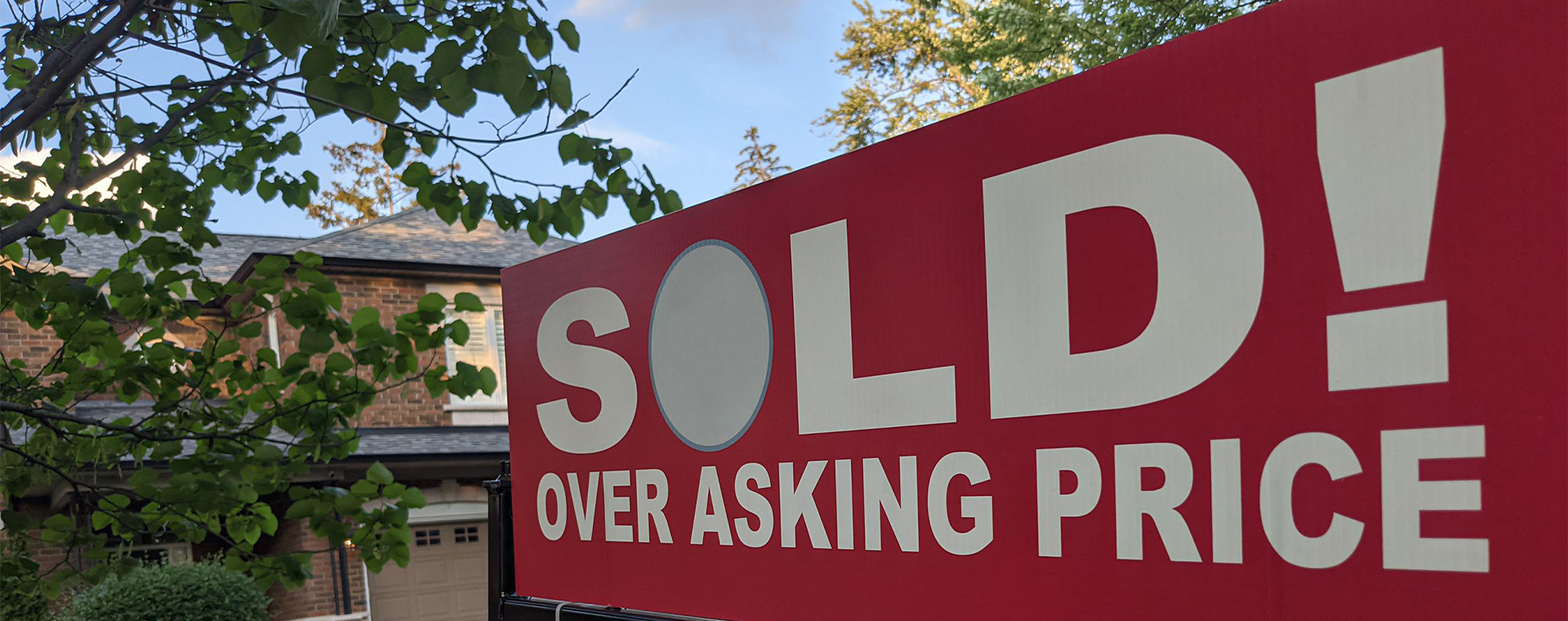
When the Canadian Real Estate Market peaked in February, this was undoubtedly the key question on prospective homebuyers’ lips, whether a single-family home in rural Ontario or a condominium unit in downtown Vancouver. It was also a hot topic – and goal – of home sellers from coast to coast.
The “pandemic boom” was certainly a housing market that many people will never forget, especially in the major urban centres such as Toronto and Montreal. Even Atlantic Canada got in on the enormous gains, thanks to notable population increases as a newfound freedom to work remotely opened up options on where to buy a home.
One notable trend accelerated in Canada’s housing market as it built up to its peak: homes sold over asking.
With falling inventories, strengthening demand and bidding wars, many homes were selling for well over the asking price. For example, in 2021, Ottawa homes were selling for nearly 28 per cent more than the listing price. Or, as another instance, the Bank of Canada (BoC) noted that two-thirds of homes sold in the Greater Toronto Area in February 2022 had sold above the listing price.
This may still be the norm in some large markets, even if the red-hot real estate market is being cooled by tighter monetary policy. But what does “sold over asking,” which has become plastered on many front lawn signs when a transaction is closed, mean anyway?
The term “sold over asking” means that the residential property was sold for a value higher than the listing price. So, if the home is listed at $500,000, multiple bids might raise the final sale price to $530,000. This means that the house was sold over the asking price.
In some cases, the seller might under-price a home to create more competition. When this happens, the same circumstances will arise: the semi-detached house or townhome is sold for a price greater than what is listed for.
There is also another relevant term: blind bidding. This is when homebuyers submit offers without knowing the competitors’ bids – a process that also often results in homes selling well over asking price.
Alternatively, some listings might not attract any offers, so the property may be de-listed, and then re-listed at a lower price. If it’s low priced enough, it it’s feasible that a buyer might offer more than the asking price, in an effort to secure the purchase.
With that being said, this has become quite the phenomenon in the present landscape. In a 1992 paper published in the Journal of Applied Econometrics by economist Joel Horowitz, it was purported that residential units “routinely sold at prices below, but rarely sold at prices above,” adding that list prices were essentially “price ceilings.”
Of course, fast forward 30 years, and this is not exactly a realistic analysis.
“Where do these stats leave a buyer today? The willingness and commitment of some buyers to outspend everyone else imply that homes in high-demand markets will transact at prices much higher than what they are listed for,” wrote Ryerson professor Murtaza Haider and real estate industry veteran Stephen Moranis in an op-ed published in the Financial Post.
Let’s be honest: You see your dream home and want to do everything in your power to buy it. Unfortunately, paying over asking price can affect your financing. Indeed, the financing can significantly impact households considering paying a higher price than what they have been approved for or what they can afford.
In addition, mortgage lenders might utilize an appraiser’s assessment of the home’s value. The dollar figure is determined by studying the local market’s sales, prices, inventories, and other relevant data points. Overall, the appraised value plays a significant role in financing.
In a market like Toronto or Vancouver, where buyers compete to find a home at any price, it is likely that bidding wars and over asking will be ubiquitous. But what about smaller markets? It would depend on housing activity, availability and prices. With the central bank raising its key interest rate, making borrowing more expensive, we appear to be experiencing a much-needed cooling-off period.